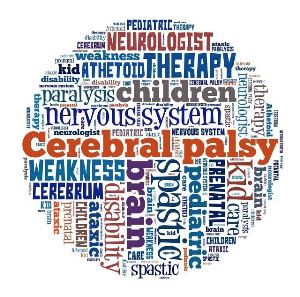
At Caress Worland Law Group, we have extensive experience in birth injury cases. Our legal team works with a network of trusted medical and life-planning experts to determine the physical, psychological, and financial effects of our clients’ injuries. We get to know the child and his or her family personally so that we can present a compelling case for maximum compensation. When we represent you, we want you to feel confident at every stage of your case and we want you to know that we are here to help in any way we can.
With birth injuries often costing families hundreds of thousands (if not millions) of dollars, most parents simply cannot afford to move forward without asserting their legal rights. When you contact us, our first step will be to sit down with you in a one-on-one consultation. During this consultation (which is completely free and confidential), we will begin learning about what happened to your child. We will then start assessing the financial and non-financial consequences of your child’s birth injury – both now and in the future. As your case progresses, we will make sure you have all of the information you need to make sound decisions. We will make sure you do not settle for less than your family deserves.
Cerebral Palsy
Cerebral palsy is a physically-disabling brain injury that can occur during pregnancy or childbirth. Here at Caress Worland Law Group, our Indianapolis birth injury attorneys work hard to stay abreast of the most updated information possible regarding these conditions and to pass that information on to our clients. If you know, or have reason to believe, that your child has this condition, please read on for pertinent information and be sure to contact a qualified physician as well.
Cerebral Palsy is a condition that is caused when a part of the brain is dormant or paralyzed, which leads to either partial or complete muscle paralysis. Some believe that one cause could be a maternal infection, before birth, that led to the condition. However, it is well established that the condition can also be caused by trauma during the birthing process.
Cerebral palsy can be caused when the child has been deprived of oxygen for too long, dropped after delivery, pulled out too forcefully, or had an instrument-related injury (such as a forceps or a vacuum extraction-related injury). It can also occur when labor has been allowed to last longer than eighteen hours without appropriate interventionary measures. Sometimes, it occurs when the umbilical cord has cut off the baby’s oxygen supply, and that circumstance has not been identified until it’s too late. These sorts of medical malpractice can be the direct cause of cerebral palsy.

Signs and symptoms of cerebral palsy can appear during infancy, or in the preschool years, and can vary greatly from person to person. Problems with movement and coordination can be indicative of cerebral palsy and can include, but are not limited to:
- Abnormal variations in muscle tone – either being too stiff or too flaccid
- Muscle spasms and/or rigidity
- Lack of muscle coordination
- Tremors or other involuntary movements
- Delays in reaching motor skill milestones
- Favoring one side of the body over the other – such as by dragging a leg or reaching with only one hand
- Difficulty walking
- Excessive drooling or difficulty swallowing
- Difficulty eating
Speech delays - Difficulty with fine motor skills
- Seizures
Brain abnormalities that are associated with cerebral palsy can also contribute to other neurological problems, including but not limited to:
- Difficulties with hearing and vision
- Intellectual disabilities
- Abnormal perceptions of pain and touch
- Oral diseases
- Psychiatric conditions
- Urinary incontinence
The effects of cerebral palsy can be limited primarily to one limb or one side of the body – or in more severe cases, can affect the whole body. If you see a combination of these symptoms, it is certainly a wise decision to discuss your concerns with a well qualified physician who can properly assess and diagnose this condition. Your physician will be able to conduct blood tests, cranial ultrasounds, MRIs, CT Scans, or other diagnostic measures necessary to make a determination as to the condition and its likely cause. Evaluations of the child’s mobility, speech, hearing, vision, gait, and feeding habits will also be helpful.
Once the condition has been diagnosed, there are four different classifications of cerebral palsy – each characterized by its own unique limitations and impairments:
- Spastic Cerebral Palsy: This is the most common type of cerebral palsy. People who have this type of cerebral palsy have muscles that are stiff and may look stiff and jerky. It is caused by damages to the motor cortex of the brain before, during, or after birth.
- Athetoid Cerebral Palsy: This type of cerebral palsy is characterized by uncontrolled movements. A person who has this type of cerebral palsy may make erratic movements. They have fluctuations in muscle tone, and their muscles can appear stiffer or more loose than is normal.
- Ataxic Cerebral Palsy: This is the least common type of cerebral palsy. Those who have this type of cerebral palsy will exhibit tremors and lack of coordination as well as speech and oral problems. It is caused by damage to the cerebellum: the part of the brain that helps to control movement and coordination.
- Mixed Cerebral Palsy: Often, cerebral palsy patients do not have the symptoms of only one type of the condition. When symptoms of more than one type of cerebral palsy are indicated, physicians called the condition mixed cerebral palsy. Because it can be a combination of conditions, symptoms will vary from person to person and it is best to consult with a trained physician for a more definitive diagnosis.
There is currently no known cure for Cerebral Palsy, and long-term treatment typically focuses on managing the child’s symptoms during growth and development through medications, surgical procedures, and various forms of therapy. Once your child has been diagnosed with this condition, you will likely be introduced to a team of experts who can help you determine what treatments and accommodations would best suit your child’s needs.
Unfortunately, because cerebral palsy is a permanent, lifelong condition, you will need a long-term plan. A trained team of experts can help you create a life care plan that will include a list of accessories the child may need (such as a wheelchair, a walker, braces, etc.) as well as ongoing physical, speech, or occupational therapies, and educational accommodations at school. It is very important to seek the help that you need, to surround yourself with a team of healthcare providers and advisors that you trust, and to know that you are not alone. As your child’s best advocate, you need to surround yourself with those who will help you and your child in the most effective way possible.
If you suspect that your child may have cerebral palsy, the first and most important step is to seek advice and treatment from a qualified physician. After you have done so, and if your child has been diagnosed with any form of cerebral palsy, we encourage you to speak with one of our attorneys about filing a claim for medical malpractice. The truth of the matter is that not all cases of cerebral palsy are the result of medical malpractice – although a significant number of them are. We’re here to help listen to your circumstances and make the determination if medical malpractice may be the cause of your child’s condition. If this is the case, our dedicated Indianapolis birth injury attorneys will determine what steps forward would serve to best assert your rights under the law.
We are fortunate to live in a time of highly advanced medical innovation. While these innovations are wonderful when utilized effectively, it can be devastating when the opposite occurs. Physicians are often able to diagnose ahead of time whether a mother is likely to have complications during childbirth. One example would be where a physician regularly monitors a child’s weight and size to determine if the baby is too large to be delivered normally (in which case a C-section should be scheduled). In other circumstances (during the delivery process, for example), physicians should be able to detect and diagnose an umbilical cord prolapse that could lead to oxygen deprivation. Unfortunately, physicians occasionally fail to do what they should. In those situations, we’re here to help.
Caring for a child who has cerebral palsy will be an expensive and likely lifelong circumstance. Ongoing costs will include various therapies (occupational, physical, and speech), home health care, medical equipment, prescriptions, regular doctor’s visits, and more. These are not costs that you should have to bear alone if an unfortunate case of medical malpractice has resulted in the injury. In those cases, the negligent party should be held responsible for their actions, and you should receive the compensation and financial assistance that you deserve.
The unfortunate truth of the matter is that rarely will a physician, or anyone else who contributed to your child’s condition, simply admit the blame. In most situations, physicians and hospitals have their own legal teams who will mount a defense on their behalf and dispute any claims of medical negligence. As a result, you’ll need someone on your side who is experienced, knowledgeable, and prepared to make your case in the most effective manner possible.
If you file and are successful in a medical malpractice lawsuit for cerebral palsy, you can often expect to receive compensation for things like pain and suffering, medical treatment, lost wages, and more. While damages will, of course, vary based upon the particular circumstances of each case, the one thing that remains true across the board is that no one should feel alone in living with this condition.
The experienced birth injury lawyers at Caress Worland Law Group understand this condition and your rights under the law. We know the strategies used by medical defense lawyers to attempt to discredit your efforts toward compensation, and we know how to fight back against those tactics on your behalf. You should never be stuck with a mountain of medical bills that you’re unable to pay because of the negligence of another party. We can begin building your case by gathering the evidence that you need, including obtaining medical records, interviewing doctors and other healthcare staff, and obtaining independent medical evaluations. We’re willing to do what it takes to make sure that you put your best legal foot forward.
As with most other sorts of lawsuits, cerebral palsy medical malpractice suits have a statute of limitations. This means that you have only a certain amount of time to file from the time that the injury occurred. These statutes can vary from state to state. But if you have reason to believe that your child has this condition, you should contact us as soon as possible to discuss your case.
When you do, you’ll be able to rest assured in the knowledge that you are talking to a legal team that cares – and one with the experience, knowledge, and compassion to put up the best fight for you and for your child. At Caress Worland Law Group, we believe that no parent should struggle with this condition alone when help is available and deserved. Contact our compassionate and highly skilled Indianapolis birth injury attorneys today to discuss your circumstances and the best next steps forward. We’re here to fight for you and for the child you love.
Erb's Palsy
Erb’s Palsy is another condition (usually the result of a birth-related injury) that can be significant, and in some cases, lifelong. At Caress Worland Law Group, we make every effort to be fully informed about this condition and others. This is so that our committed Indianapolis birth injury lawyers can effectively pass that information on to our clients and understand their circumstances. If you know, or have reason to believe, that your child has Erb’s Palsy, we would be honored to fight on your behalf for the compensation you deserve. Please read on for pertinent information, and be sure to contact a qualified physician as well.
Erb’s Palsy, also known as Brachial Plexus Palsy, is a medical condition that is characterized by symptoms similar to those of Cerebral Palsy but which also results in paralysis. The brachial plexus is a network of nerves, called Erb’s Point, located near the neck that helps to control all of the nerves of the arm. These nerves provide movement and feeling to the shoulder, arm, hand, and fingers. As a result, people who have this condition will have arm weakness and loss of motion. Erb’s Palsy refers only to damage to the upper nerves of the brachial plexus. If nerves on both the upper and lower ends of the brachial plexus are stretched and injured, this condition is known as total or global brachial plexus palsy.
Erb’s palsy is typically the result of birth trauma where a complication during delivery causes damage to nerves in the baby’s neck. Because it is a condition that is caused by stretched or torn nerves, and because it usually happens during childbirth, most medical experts are in agreement that it is a condition that is generally avoidable.
One way that Erb’s Palsy can be triggered is when the baby is passing through the birth canal at an awkward angle – when the head is turned to one direction while the arm is being pulled in the opposite direction. Excessive pulling on the shoulders is also common in cephalic presentation where the baby is delivered facefirst. Another situation in which it can occur is when the baby is delivered through the birth canal in a breach birth. This can cause the brachial plexus nerves to be stressed and injured as the baby’s arms are often pulled backward over the head at the same time that the delivering physician is attempting to pull the newborn from the birth canal by its legs. These difficult deliveries can cause shoulder dislocation as well as damage to the brachial nerves that ultimately results in Erb’s Palsy.
One or two of every 1,000 babies born in the United States each year will have Erb’s Palsy. It is usually evident when a baby shows weakness in the affected arm, seems to favor it, or in some cases, cannot move it. The severity of the symptoms can range from some weakness or soreness to complete paralysis of the arm. If you think that your child might have Erb’s Palsy, the most common signs and symptoms to look for include:
- A limp affected arm that is held against the side of the body or bent at the elbow
- A decreased ability to grip with the hand on the affected side
- Partial or full paralysis of the affected arm
- Loss of sensory function in the upper arm of the affected area
- Loss of motor function in the upper arm of the affected area
- Numbness of the affected arm
- Impaired nervous, circulatory, or muscular development
The damage caused by Erb’s Palsy can be either temporary or permanent, and treatment options will vary depending upon the severity of the child’s condition. In more mild cases, the condition may resolve when consistent, quality treatment is provided. In other more severe and unfortunate cases, the condition can be lifelong, causing permanent functional loss in the arm that is affected along with permanent abnormal muscle contractions. Often, it will take several months of development before it is possible to determine the severity of the child’s injury and his or her future medical needs.
If your child has been diagnosed with Erb’s Palsy, seeking effective treatment quickly is of critical importance in order to increase the chances that the condition might resolve. You will likely be referred to a treatment center that has a team of physicians specializing in different areas of healthcare such a neurologists, neurosurgeons, physical therapists, occupational therapists, and orthopedists. They can assist you in creating a treatment plan that will suit your child’s needs. Various treatment options include:
- Surgery: If surgery is recommended, it should be done within the first three to six months after birth – unless your doctor suggests otherwise. Surgical attempts often focus on restoring partial arm function and can include removing scar tissue, nerve grafting, and other techniques in order to do so. Your physician will be able to explain this option in greater detail should it be an option for your child.
- Physical Therapy: A wide range of physical therapy techniques may be helpful in treating this condition. Various range of motion exercises can help to improve strength, flexibility, and nerve function. A qualified physician and physical therapist team will be able to determine which treatments would best suit your child’s needs.
- Injections and Electrical Stimulation: Botox injections into the affected area have also proven helpful and may be advised, depending on your particular circumstances. Electrical stimulation, in which short electrical pulses are delivered directly to the affected area in order to strengthen the affected muscle group, may also be recommended.
Another important part of treatment can include creating what is known as a Life Care Plan. A Life Care Plan can be set up for the purposes of determining how much money will likely be needed in order to care for your infant’s birth injuries throughout their life. Life Care Plans outline anticipated treatment expenses, including those for medical equipment, prescriptions, physician visits, physical therapy, and more. A life care specialist, along with a team of physicians, can assist you in considering these important matters.
As you are seeking treatment (and once you’ve obtained a diagnosis of this condition along with doing things like creating a life care plan), it’s important that you contact our qualified team to begin pursuing the rights you may have under the law. As is the case with the majority of lawsuits, medical malpractice suits for Erb’s Palsy have a statute of limitations in which to file. This means that you have only a certain amount of time to file from the time that the injury occurred to begin your lawsuit. If your child has Erb’s Palsy, it is important that you remain in close contact with a treating physician who can help you assess your child’s needs and prognosis. It is also important that you consult with an attorney at our firm who can assist you in understanding your legal rights to recovery.
While there are occasional cases of Erb’s Palsy that arise with no apparent cause, this condition, as noted, is often triggered by things like: a physician pulling too forcefully on the baby’s arms, a physician failing to plan and carry out a c-section in a timely manner, improper use of birthing instruments like forceps and vacuum-extractors, or failure to monitor for signs of fetal distress. If you believe that your child has been injured as a result of malpractice of this sort, we’re here to help.
At Caress Worland Law Group, our proven Indianapolis birth injury lawyerss have the experience and knowledge that you need on your side if you are contemplating a medical malpractice claim for a case of Erb’s Palsy. If your child has this condition, you may already know (or will soon realize) that the expenses associated with caring for your child can be overwhelming. While circumstances will, of course, vary from case to case, types of compensation you may recover include damages for medical treatment. This includes prescriptions, doctor’s appointments, surgery, physical therapy, occupational therapy, and more. Damages may also cover things like lost wages and pain and suffering – among other things. While there is no way to know what damages you may or may not receive, a qualified attorney can listen to your particular circumstances and help determine what sort of compensation you may deserve under the law.
In addition to seeking help from qualified physicians and from our expert team at Caress Worland Law Group, you may also want the support of other parents who are going through this experience as well. No one wants to feel as if they are struggling alone. If this is you, we are happy to say that there are a number of support groups across the country, including a foundation known as the United Brachial Plexus Network. These resources can offer families emotional, financial, and educational support as they learn about this condition and how to live with it. Other great ideas include local churches, support groups, and charities. Getting involved can make a big difference in your capacity to live as normally and functionally as possible with this condition. And of course, at Caress Worland Law Group, we’d like to help you obtain the resources to live as normally as possible as well.
When you contact the qualified Indianapolis birth injury attorneys at Caress Worland, you’ll be able to rest assured in the knowledge that you are talking to a legal team with the experience, knowledge, and compassion that you need. We’ll fight for you and for your child to receive the compensation you deserve. No parent should struggle alone with this condition when help is available and deserved. Contact our team today. We’re here to listen to your circumstances and to help you build your case. Let us focus on your case so that you can fully focus on your child – hopefully, with the compensation you deserve in order to do so. We look forward to speaking with you soon.
Failure to Recognize Maternal Infections
- Chicken pox
- Influenza
- Gonorrhea and certain other sexually-transmitted diseases (STDs)
- Hepatitis B
- Rubella
- Syphilis
- Toxoplasmosis
- Urinary tract infections
- Zika virus

Failure to Recognize or Treat Maternal or Fetal Distress

Failure to Perform a Timely C-section
Failure to Diagnose or Treat Jaundice, Meningitis, or Seizure Disorders
Improper Use of Delivery Tools (Vacuum Extractors and Forceps)
While vacuum extractors, forceps, and other delivery tools are designed to aid in the safe birth of a newborn, they should only be used when necessary due to the risks they entail. Errors in using these tools are common, and related birth injuries and complications include:
- Brain bleeding
- Cerebral palsy
- Cognitive disabilities
- Facial injuries and facial palsy
- Developmental delays
- Seizure disorders
- Skull fractures
All of these conditions are serious, and many can present lasting, lifelong consequences and need for treatment. These are not circumstances that you should face alone. Call us to discuss your legal options and to begin pursuing recovery of the compensation you deserve.
In Indiana, parents can seek financial compensation for the current and future costs of medical care for their child’s birth injury. In appropriate cases, financial compensation is also available for:
- The parents’ loss of income incurred while caring for their child
- The child’s loss of earning capacity
- Home and vehicle modifications and other out-of-pocket expenses
- Special education costs
- Counseling, psychological therapy, rehabilitative therapy, and other forms of therapy
- Pain, suffering, and loss of enjoyment of life
Possibly, but most likely not. While there is always the potential for a medical malpractice case to go to court, the vast majority of cases settle privately through negotiations with the provider’s medical malpractice insurance company.
